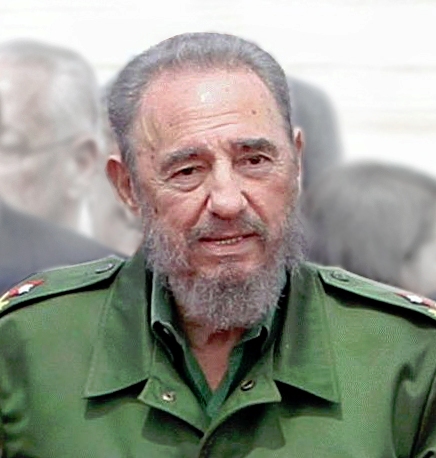The island of Cuba was forever changed in the year 1959 when its former dictator, Fidel Castro, along with his brother Raúl, Argentinian Ernesto “Che” Guevara, and hundreds of other supporters, overthrew then-President Fulgencio Batista. On Nov. 25, 2016, Fidel Castro died at the age of 90. Castro’s reign was littered with controversy, corruption, and abuse. Promising freedom and promoting patriotism with his infamous phrase “Patria o Muerte!” (Country or Death!), Castro gained a large following. When it became likely that the Revolution would prevail in the 1950’s, many Cubans fled the island to protect their families and their future as they feared what Castro would do. Castro built hundreds of miles of roads, raised the pay of the lower class, granted nation-wide health care, and nationalized people’s possessions, homes, and land without explanation.
Castro claimed numerous times not to be a communist; however, he appointed Marxists to governmental and military positions, while jailing most who opposed him. In 1961, following an embargo set by the United States, Castro began denouncing America and confessed to being a Marxist for many years. President Eisenhower and President Kennedy both supported an initiative by the CIA to overthrow Castro; this would later be known as the Bay of Pigs invasion, which notoriously failed. Castro turned to Soviet nations, who provided military and economic support. The Cuban Missile Crisis began when Nikita Khrushchev, premier of the Soviet Union during the Cold War, wanted to store nuclear missiles in Cuba, terms to which Castro agreed. Once the United States found out there would be nuclear missiles 90 miles from their shores, they began investigating each vessel headed to Cuba. Castro asked Khrushchev to threaten the U.S. with nuclear war. However, Khrushchev instead offered to remove the missiles from the island if the U.S. promised not to invade Cuba again.
These two events have defined Castro’s time as dictator of Cuba. Before entering surgery in 2006 for intestinal bleeding, Castro gave his brother, Raúl, all presidential duties and in 2008, Raúl was officially declared President. Today, the Cuban people do not have freedom of speech and are hungry. The Cuban government continues to nationalize property and indoctrinate its citizens through its educational system and political propaganda. Cuban-Americans that have family on the island are able to “claim” immediate family members in order to bring them to the United States, however, that process has proven to be difficult. Cuban-American musician Willy Chirino wrote the song “Nuestro Día Ya Viene Llegando” (“Our Day is Coming”), one many Cuban’s have an emotional connection with, as it describes the experiences of a Cuban refugee and the yearning for Cuba Libre, a free Cuba. Many Cubans understand the hardships of the oppressed citizens and thus rejoice whenever the communist government is negatively affected.
Fidel Castro has been at the root of the suffering for many Cubans. He has been pictured on toilet paper, constantly criticized, and described as a rat, snake, and friend of the devil in the aforementioned Willy Chirino’s song “El Diablo Llego a La Habana” which is inspired by “The Devil Went Down to Georgia” by The Charlie Daniels Band. For years, even rumors of Castro’s death sparked celebration, most notably in Miami, a city with a large population of Cuban-Americans. When news broke that Fidel Castro had actually died, “Magic City” lit up, and hundreds of people took to the streets to celebrate. Many flocked to “Versailles,” nicknamed “The World’s Most Famous Cuban Restaurant,” to join other Miami residents and drink their cafecito. While some believe that Fidel’s death will bring about the fall of the communist Cuban government, others believe that his death is irrelevant in terms of political change. At the very least, Cuban-American relations have shown signs of improvement.

Be First to Comment